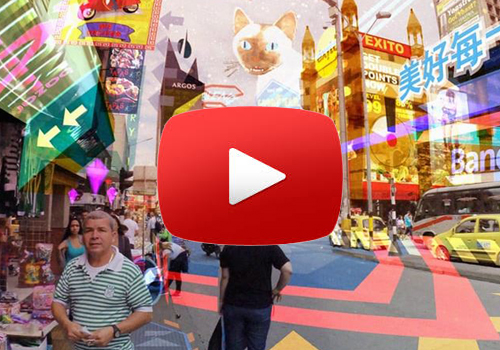What it is: ">Keiichi Matsuda created a video to simulate an “augmented reality” or “hyper-reality” future, in which the real world around you is “augmented” with all kinds of information feeds. Take a look below, it’s a little over 6 minutes long and it is more than a little astonishing.
HYPER-REALITY from Keiichi Matsuda on Vimeo.
Why it’s important: It’s coming. Just as today, we live in a world augmented by the online reality accessed through our devices, in the not-too-distant future we will likely live in an augmented reality universe, with the information feeds augmenting — and distorting and disrupting — our everyday experience of the world around us.
To think about:
Clinical workflow: As we re-mold our clinical workflow for greater real productivity, augmented reality will be a big part of that. But think about how poorly implemented healthcare IT has mostly decreased our productivity so far and interfered with the physician’s and clinical team’s jobs. Look at the video again and see how wildly dysfunctional the augmented reality is for the woman experiencing it. Imagine how distracting and obstructive such an experience could be in the clinical workflow if it were designed as poorly as most of today’s electronic health environments.
Dependencies: The woman in the video is so totally tied into the system that when it goes down or gets hacked, her functionality in the world disappears. An intelligent design of a clinical augmented reality would be cellular, that is, locally independent of the cloud and the larger system.
Gamification: Much of this vision of the world is peppered with rewards, “points,” that powerfully influence the woman’s behavior. Clinical practice is headed this direction, with pay for performance and other quality rewards that are not necessarily related to the true value to the customer, better health and medical care at lower cost. Building these rewards directly into an augmented reality system would interfere with getting to true value. Prevention programs are also headed this way, building in, for instance, premium reductions for cooperating with the program. But data shows that such methods typically fail, as they do not answer the reasons why people have medically dysfunctional lives.
Class: Notice what the woman is doing with the augmented reality. She is actually performing a number of tasks simultaneously, trying to piece together a living in a hyper-Uberized economic landscape. Economies are headed this way. Any idea of how we can provide healthcare to the whole population has to deal with what increasingly will trend toward an all-freelance “Task Rabbit” economy.
Augmented reality is coming, and it can be powerfully useful in healthcare and medicine. It could also be a morass. We have to drive it in the right direction.
If you’re a follower of Peter Diamandis over at Abundance Insider, you’ll likely have seen a similar format to the one I used above in his tech insights newsletter. If you’re not already a fan, I recommend you check out Peter’s blog here.


